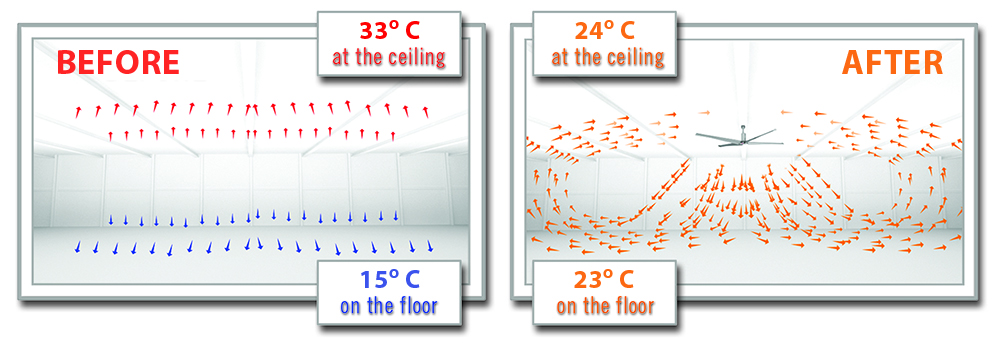- Home
- News
- How Quickly Will an HVLS Fan Pay for Itself?
How Quickly Will an HVLS Fan Pay for Itself?
Here at Rite-Hite, we’re big fans of saving you money. And when it comes to our high volume, low speed (HVLS) fans, we can almost guarantee that the associated cost savings will ultimately result in the fan paying for itself.
This is possible because HVLS fans work year-round; in all climates so you’re reaping the benefits no matter the season. They are capable of providing benefits on their own or alongside your existing heating and cooling solutions, making them a great fit for nearly any industrial application.
Efficiency = Cost Savings
HVAC systems are notorious for being power hogs (around 27% of energy consumption for large commercial buildings is used for heating and cooling), and if the heating and cooling solutions you have in place are inefficient, you’re throwing away even more money. Plus, a single HVLS fan can replace 10 to 20 high-speed floor fans.
While HVLS fans can certainly have a positive impact on your facility’s heating and cooling needs as a solitary solution, they also fit in seamlessly alongside other HVAC solutions you may have already implemented. The low cost to power an HVLS fan paired with their propensity to make other systems more efficient (reducing the effective temperature by 4-6°C) make adding an HVLS fan a simple decision.
Benefits in All Seasons
Understandably, when most people think about fans they think about the cooling benefits in the summer. HVLS fans, in conjunction with HVAC Systems, have been shown to reduce the perceived air temperature of a building without lowering the thermostat.
However, an HVLS fan doesn’t just save you money in the summer months; it also destratifies the air in winter months to save you money on heating costs. HVLS fans redirect warm air at the ceiling by pushing it down to the floor level where it's needed. The air reaches the floor below the fan where it then moves horizontally a few feet above the floor and eventually rises to the ceiling where it is cycled downward again. This mixing effect can result in ultimately a single degree difference in temperature from the ceiling to the floor – reducing the strain on the heating system and cutting energy use by up to 30%.

The Answer
We’ve explained to you exactly how an HVLS fan saves you money, but how long will it take for one of our fans to cover its own cost?
Although there are many variables at play including the size of your facility, climate, and other heating and cooling solutions you have implemented, we have calculated that our HVLS fans save our customers about 4 percent on their electric bill for every degree they lower a building’s effective temperature in the summer.
Winter energy savings can reduce heating bills by up to 30 percent!
With all this taken into account, it's possible that your HVLS fan will pay for itself in less than two years.
If you’d like to receive your personalized energy and cost savings assessment, please contact us by clicking one of the buttons below.
Find a Rep Contact Us